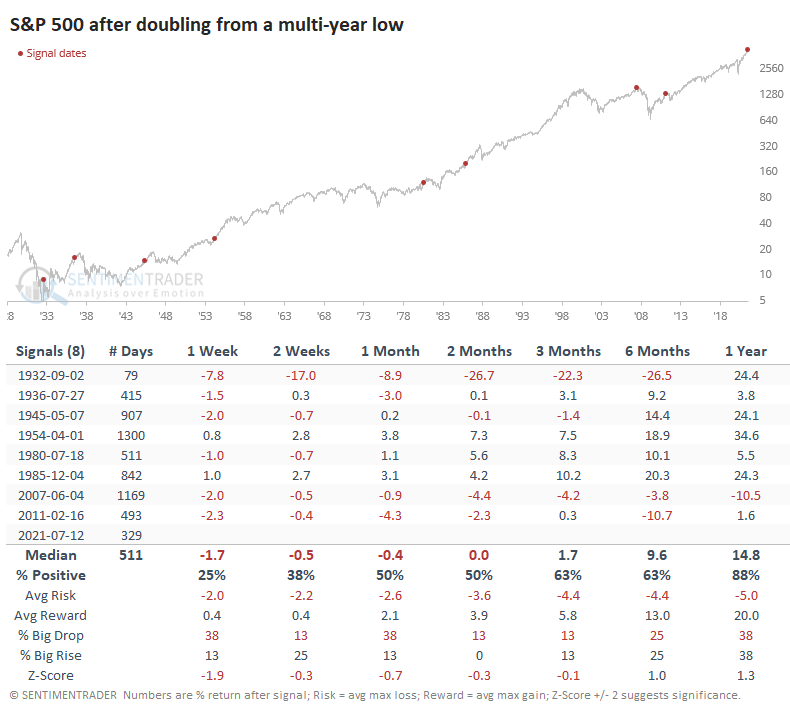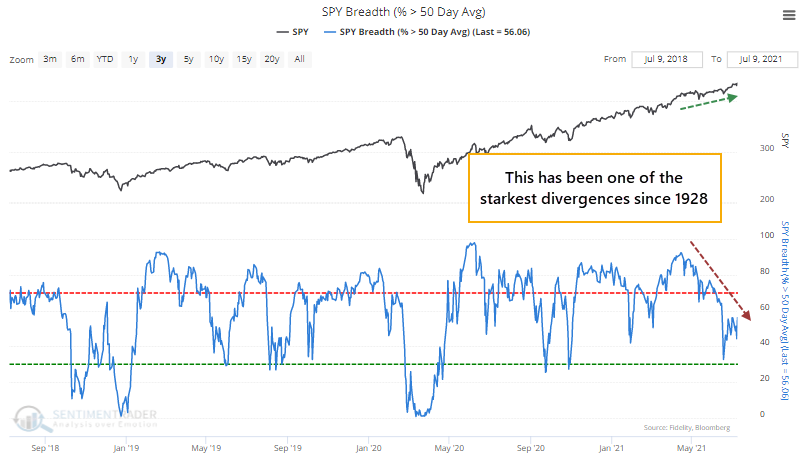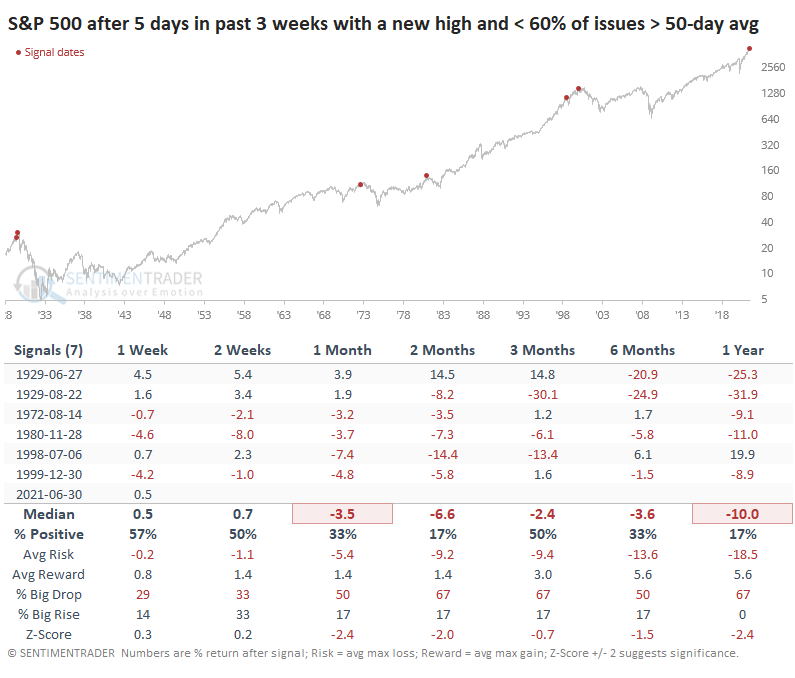As Stocks Double, A Record Run with Record Low Participation

It seems like it's taken forever, but in reality, it was almost no time at all.
The most-benchmarked index in the world has now doubled from its pandemic low. After falling to 2,191 on March 23 of last year, the S&P 500 closed at 4,384 on Monday. This marks the third time that the index has doubled from a multi-year low over the past two decades.

For what it's worth (maybe not much), the other two times the S&P reached its doubling point preceded a correction and a bear market. Going back to 1928, this is the 2nd-fastest doubling off of a multi-year low, eclipsed only by a breathtaking rally in 1932. These are the only two times it managed to double in under 400 trading sessions.

It's doubtful whether investors pay much attention to this metric, so there's little reason why it should matter much to future returns. As we've seen time and again, however, trying to find a reason for moves is just an academic exercise, and often what seems to make sense doesn't work, anyway.
After the other doublings, the S&P continued to rally heartily in 1954 and 1985. The others either saw short- to medium-term pullbacks or had shorter-term gains erased as investors took a breather.
A RECORD CLUSTER OF RECORD CLOSES
The double is due in part to a remarkable run over the past three weeks. The S&P closed at a record high on 10 out of the past 15 sessions for the first time in more than a year.

The other time the index enjoyed a run like this was just before the pandemic struck. Even without that outlier, the S&P did have some trouble holding onto its momentum over the medium-term.

In the 1950's, both signals preceded strong gains. Since then, the only time the S&P managed to rally strongly over the next couple of months was in 1995. All of the others saw either a decline or weak gain.
BUT ONLY THE INDEX, NOT ITS STOCKS
The great run in the index is still hiding some issues under the surface, as there's the issue with relatively few stocks managing to climb above their 50-day moving averages. It hasn't been able to jump above 60% for weeks. We've been highlighting this since late June, and clearly, it hasn't mattered yet.

These kinds of clusters are very rare. The last time the S&P saw a flurry of new highs with fewer than 60% of issues above their 50-day averages was in 1999. Even going back to 1928, this is an extreme outlier.

Stocks have been generating "extremely rare events" for months now, and still the indexes are sitting at or near new highs, so the oddities haven't mattered one whit. If the doubling of the S&P and excitement over good corporate earnings bring in even more buying pressure - an entirely plausible scenario during a momentum-driven market - then issues like this will continue to fail.

